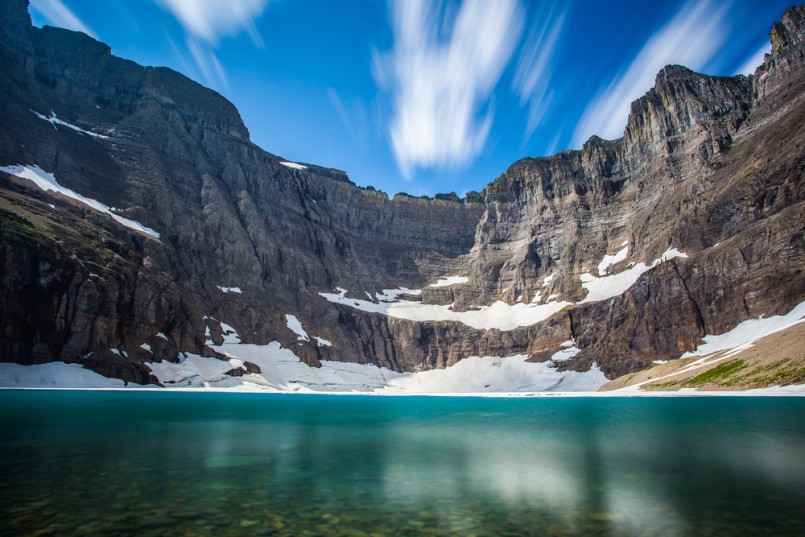Adventure Travel
Glacier National Park Is About To Be Glacierless

Image: puttsk/Shutterstock
In just ten years, Glacier National Park went from 150 thick ice sheets to a meager 25. At this rate, there’s no telling what can happen in the next couple centuries. Where snowmelt used to keep the streams running well through summer, they’re now reaching their limit in early spring. This poses a threat to farmers who rely on the water sources for irrigation, and it also threatens the identity of the national park itself. Glacier National Park may soon become Glacierless National Park.
Most scientists argue that this poor condition is a result of human-induced global warming. As winter temperatures increase, snowfall turns to rain, which in turn causes the streams to melt and flow faster. This sped up process prevents ice from accumulating into glaciers. Daniel B. Fagre, a geological survey research ecologist, told New York Times, “The way the snow goes is the way our ecosystem goes.” If this is true, then the lack of glacial formations will leave us with a dry and starved ecosystem. And seeing as the amount of days above 90 degrees in Glacier National Park has tripled since ten years ago, it is hard to deny the consequences of global warming.
For those who live in the area, they can actually see the drastic changes occurring in the park. Ten years ago, Grinnell Glacier reached more than 6,000 feet above sea level. There was a 25-foot wall of ice that had locals worried about the safety of the area. Nowadays, you’ll only see a glacier slope right into the water without any wall of ice. To a tourist visiting for the first time, he or she may not see anything wrong with the still-beautiful glacier, but those who have been around longer can only reminisce about the days where the glaciers were much larger.
As the glaciers continue to dry up, we will see the plants dry out too. The greenery in Glacier National Park relies primarily on the streams and pools created by the glaciers. With both the glaciers and plants drying out, this will impact the wildlife in the area tremendously. Fish and insects will become scarce, tree lines will begin higher up the mountain preventing mountain goats from protecting themselves against mountain lions, and hummingbirds may arrive too late for the nectar they need to survive if spring continues to arrive prematurely.
This does not all have to be bad news. There are many ways we can slow down this process by participating in a greener lifestyle and by calling these catastrophes to greater attention. The earth does its part to sustain us, and it’s our turn to do our part and save what’s left of it.





0 comments